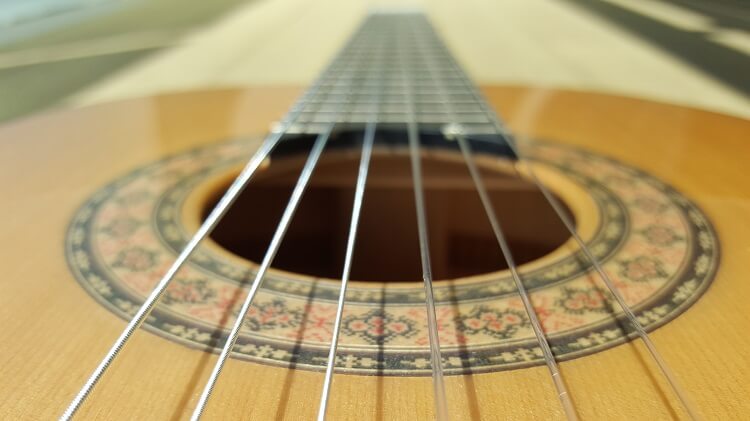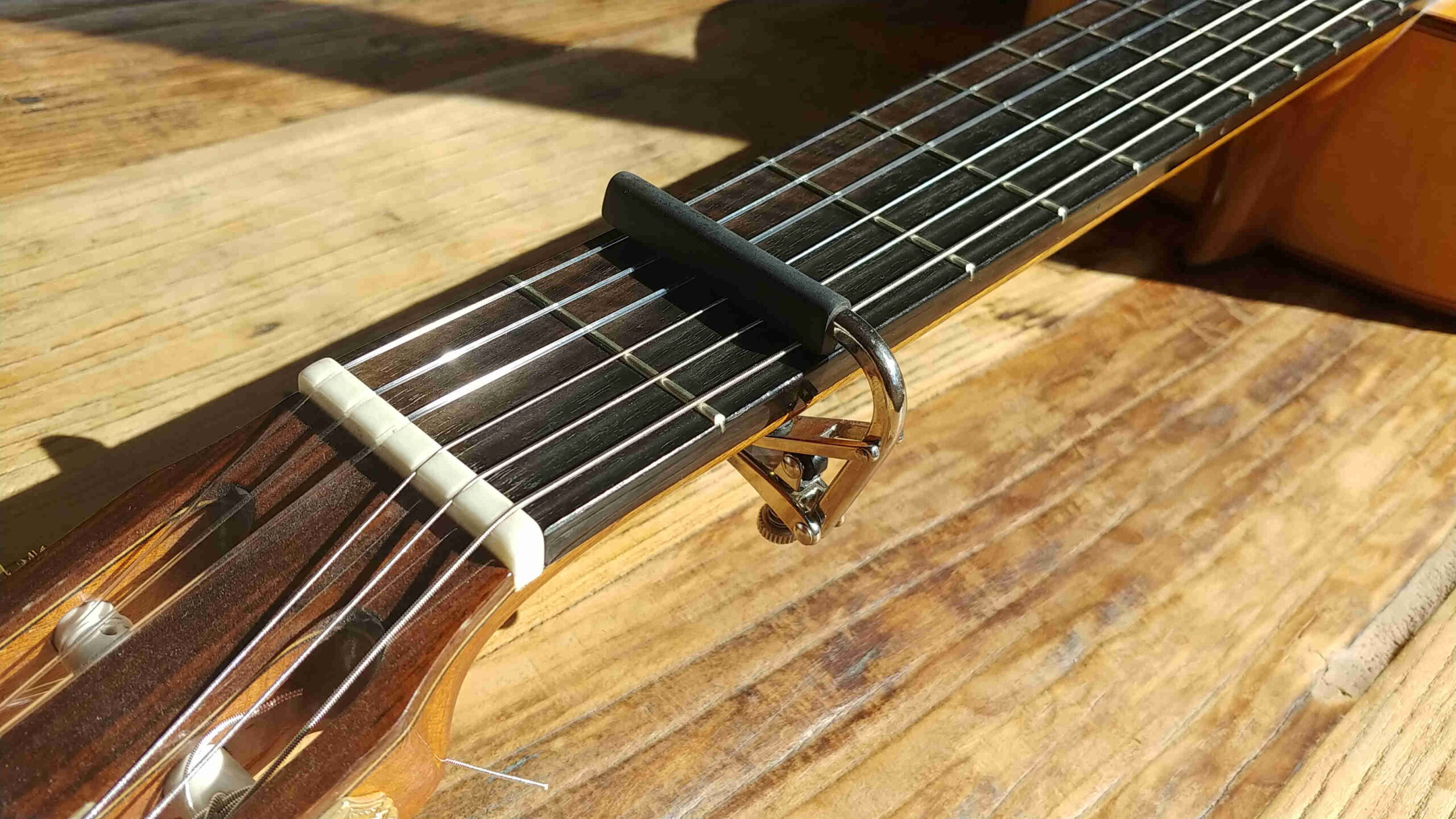Play any guitar for a few minutes and it quickly becomes clear that string tension plays a crucial role determining an instrument’s playability or feel. What is sometimes less apparent is how string tension also affects the volume and tone of the guitar.
String tension is defined as the amount of force required to bring a string up to its required pitch. This is determined by:
- the string’s unit weight (mass).
- the length of the string that freely vibrates between the nut and saddle (or twice the distance between the nut and twelfth fret).
- the frequency of the string (pitch).
Most guitars are the same size (25 1/2″ scale length) and tuned to a standard E, A, D, G, B, and E. This leaves string mass – its diameter and material – as the key variable determining tension. It follows that high tension strings are generally heavy strings, while normal and low tension are lighter strings.
The three treble strings are commonly made of nylon, but can also be made of more dense fluorocarbon. There’s also a wide array of compounds (typically nylon wrapped in some form of metal) used to create the three heavier bass strings.
This adds weight without too much bulk and bending stiffness. If the bending stiffness property is too strong, it will make the string overtones less accurately harmonic.
High tension: louder but duller
Strings are typically sold as low (or soft), normal (or medium) and high (or hard) tension. Unfortunately these aren’t standard descriptions across the industry. For example, D’Addario’s popular EJ27H Classic Nylon “hard tension” set – which is aimed at beginners and students – has about the same overall string tension as the popular EJ45 “normal” tension set.
High tension strings tend to be made from heavier gauge material, as we have seen above. This makes the strings feel tighter and it requires more strength to play and control the instrument.
The immediate benefit of higher tension treble strings is greater loudness. A string with greater mass produces more energy to move the guitar’s soundboard. This is something that most guitarists intuitively know.
A recent research paper by Cambridge Professor Jim Woodhouse and Nicolas Lynch-Aird quantified this effect across nylon and fluorocarbon strings. They found a material damping effect occurs where upper frequencies (a note’s overtones) roll off as tension increases across the three treble strings.
This creates a duller sound although it tends to only become problematic when playing on the upper frets of the third string.
The opposite is also true: normal and low tension strings tend to produce a quieter sound which is also brighter.
Fluorocarbon strings are more dense than nylon and its properties produce less of a material damping effect. This means they will produce a brighter sound than nylon at the same tension although they may feel harder to play under the fingers.
Not surprisingly, fluourocarbon string sets tend to be higher tension than nylon sets on a like-for-like basis.
For example, the tension on the high E string of D’Addario’s EJ46FF Pro-Arté Carbon hard tension set is 22.74 lbs compared to the EJ44 Pro-Arté Nylon Core extra hard tension set‘s 17.41 lbs.
This isn’t to say either lower or higher tension strings are a better choice. It comes down to the response of each guitar and personal playing preference.






Vibrato and string tension
Vibrato is one of the strongest sources of tone color in a guitarist’s palette. String tension plays a specific role that guitarists should be aware of to control their tone and pitch.
On the classical guitar, vibrato produced by rolling the fretting hand finger fractionally varies string tension. This differs from fretless instruments, such as the violin, where left hand vibrato works by varying the string’s vibrating length.
This means lower tension strings are more sensitive to vibrato (and slightly more difficult to play in tune) than higher tension strings. The same applies to guitars of short scale length.
By the same reasoning, the higher the fret, the easier it is to apply vibrato as the vibrating portion of the string takes more energy.
There is another way to produce vibrato, which is common in rock and other forms of music: bending the string sideways.








